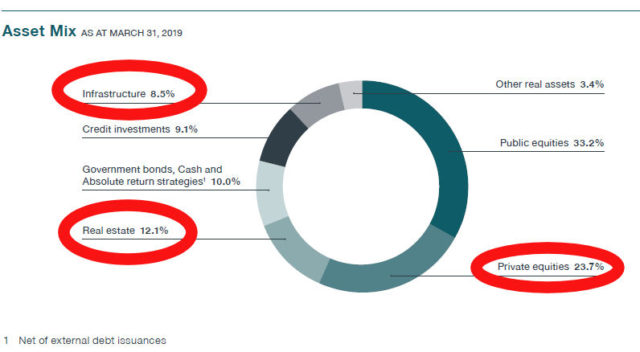(Please note I wrote this a couple days ago when prices were different but didn’t get to hitting the ‘publish’ button until now)
GFL (TSX: GFL, also NYSE: GFL) is the fourth largest North American solid waste (garbage) collection companies, behind (Waste Management, WM; Republic Services, RSG; Waste Connections, WCN). GFL vomited out its IPO after a couple false starts in early March, just before the CoronaPanic really reared its ugliest days.
If there is one guarantee on this planet, it is that waste collection will continue to be a viable business that can attract customers, and also be inflation-adjusted. There will be competitive cyclicalities that will cause margin compression, but the field also contains geographical barriers to entry that also will protect said margins, in addition to having captive customers (who the heck doesn’t produce waste?).
Financially, they have been operating as a roll-up operation; there is a lot of goodwill and intangibles on their balance sheet to reflect this history of acquisition (well beyond the equity line on the balance sheet). Patrick Dovigi is the founding CEO (from 2007) and retains a 3.7% economic stake and 27.7% voting stake in the company after the IPO – he’s also still very young – at the age of 40, he is still managing the empire.
At the beginning of March they went public at US$19/share, and the proceeds were primarily to reduce debt. They had a lot of it – about $7.7 billion, but this will be reduced to around $4.4 billion after the offering.
Financially, the operation makes money, especially when using the somewhat flawed EBITDA metric (approximately $800 million in 2019), but the “I” and “DA” amounts are significant – the company’s financial leverage was high, and garbage collection is intense on capital expenditures. They have been growing at such a large rate that they got overextended, and hence were forced to vomit this public offering out. They are going to enter a stage where they will become more efficient, and that should justify metrics that are closer to their counterparts (the companies listed in the first paragraph on this post).
(Prospectus for Tangible Equity Units)
They also sold “Tangible Equity Units” which trade as GFLU, which consist of 2.6316 shares of GFL plus US$8.5143 of a subordinated note. The units will be converted into shares on March 15, 2023 or earlier under some circumstances. The shares given will also be reduced to 2.193 if the shares of GFL trade above US$22.80, and it is a sliding scale between US$19 to US$22.80 (note that this represents US$50 of equity per unit). The subordinated note component has interest of 4%, and is amortized over a three year period with quarterly payments (consisting of roughly US$0.75/quarter per unit).
GFL currently trades at US$14/share and GFLU trades at US$41, or about a US$4.35/share above its immediate value and $17.51 if you assume full realization of US$50 of equity (which is currently worth US$36.84 at a US$14 equity price). Considering this as a hybrid instrument, you get a clean amount of upside for the first 36% of equity appreciation, and then this is effectively subject to a sold call option, until a further 20% appreciation from the US$19 par value.
An interesting hybrid instrument that I have taken a tiny stakes in, and no more.
